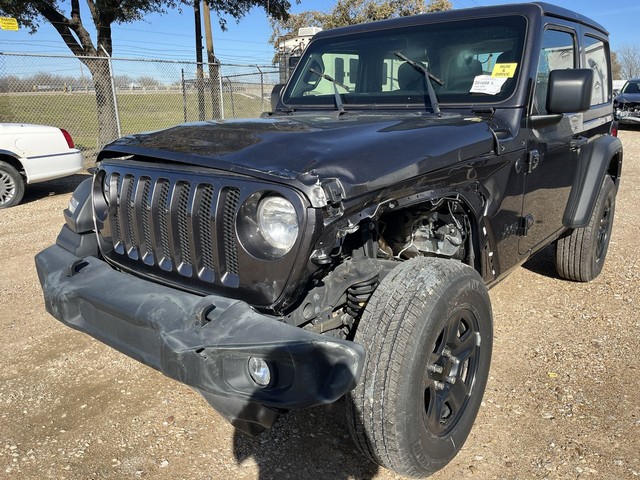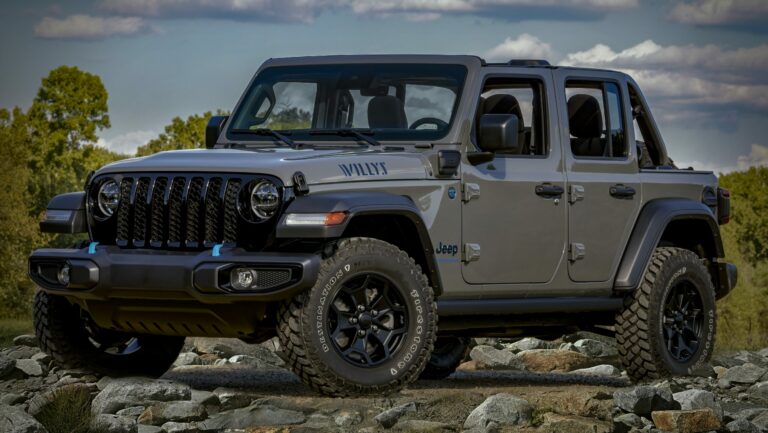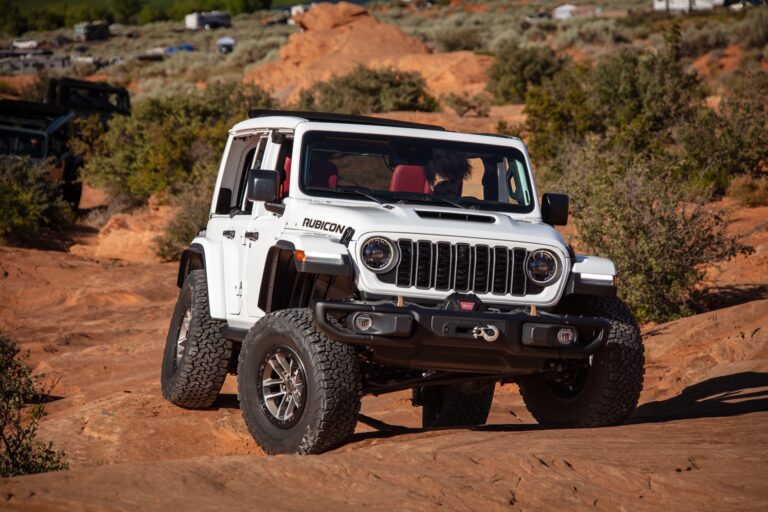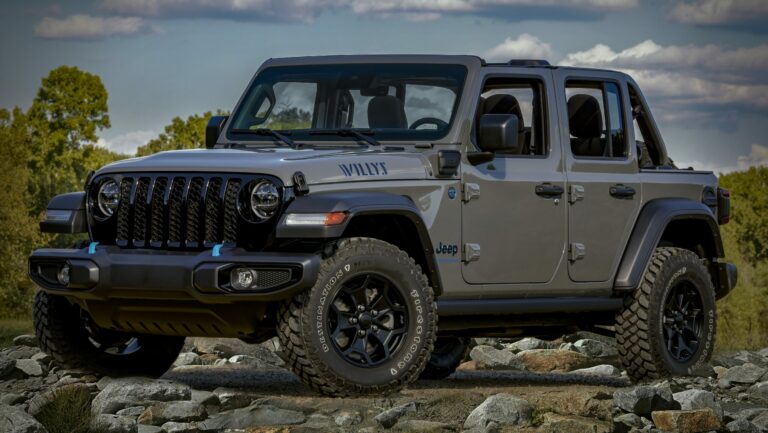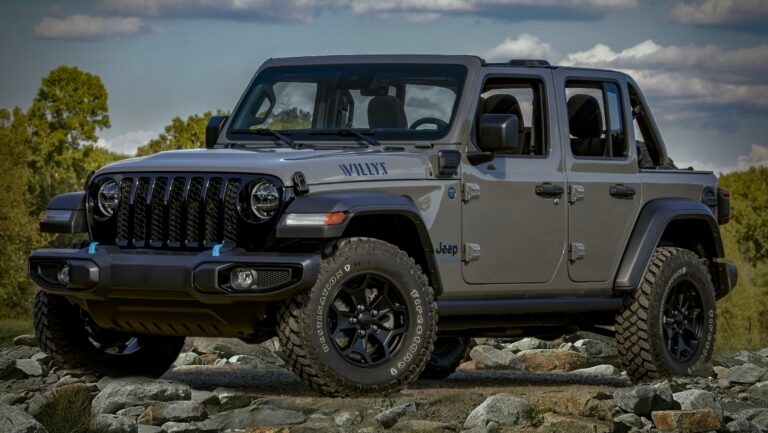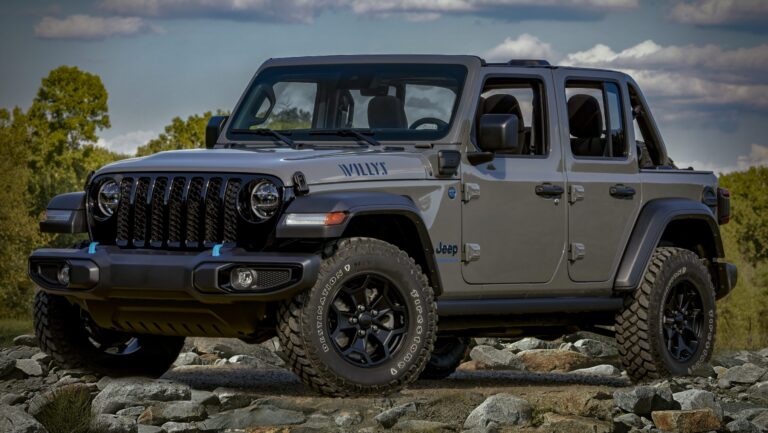Rebuildable Jeep Wrangler For Sale: Your Path to a Custom Off-Road Dream
Rebuildable Jeep Wrangler For Sale: Your Path to a Custom Off-Road Dream jeeps.truckstrend.com
The allure of the Jeep Wrangler is undeniable. Its iconic design, legendary off-road prowess, and unmatched customization potential make it a perennial favorite among adventurers, enthusiasts, and daily drivers alike. However, the price tag of a new or even a well-maintained used Wrangler can be a significant barrier for many. This is where the concept of a "rebuildable Jeep Wrangler for sale" enters the picture – offering a unique opportunity for the mechanically inclined, the budget-conscious, and those seeking a truly personalized vehicle.
A rebuildable Jeep Wrangler is more than just a cheap vehicle; it’s a project, a learning experience, and a canvas for your automotive aspirations. It represents a chance to acquire a beloved 4×4 at a fraction of the cost, investing your time, skill, and passion into bringing it back to life. This comprehensive guide will delve into every aspect of buying and rebuilding a Jeep Wrangler, transforming what might seem like a daunting task into an exciting and rewarding journey.
Rebuildable Jeep Wrangler For Sale: Your Path to a Custom Off-Road Dream
What Exactly is a "Rebuildable" Jeep Wrangler?
The term "rebuildable" typically refers to a vehicle that has sustained damage, often significant enough to be deemed a "total loss" by an insurance company, but is still structurally sound enough to be repaired and put back on the road safely. It’s crucial to distinguish a rebuildable Jeep from one that is merely "salvage" or "scrap." While many rebuildable Jeeps will carry a "salvage" title initially, the key is their potential for restoration.
Common reasons a Jeep might be listed as rebuildable include:
- Collision Damage: Front-end, rear-end, or side impacts that affect body panels, suspension components, or minor frame sections.
- Mechanical Failure: A blown engine, transmission issues, or a seized transfer case that makes the vehicle non-operational but otherwise intact.
- Water or Flood Damage: Less desirable, but sometimes viable if the water ingress was minimal and primarily affected easily replaceable components (e.g., interior, minor electrical). Severe flood damage (water over the dashboard) is generally advised against due to pervasive electrical and rust issues.
- Fire Damage: Similar to water damage, often only viable if limited to a small area (e.g., engine bay fire) and not compromising the main structure or wiring harness.
- Theft Recovery: Sometimes vehicles are recovered after being stripped or vandalized, requiring significant parts replacement.
- Neglected Project: A previous owner’s abandoned project, often partially disassembled with some new parts included.
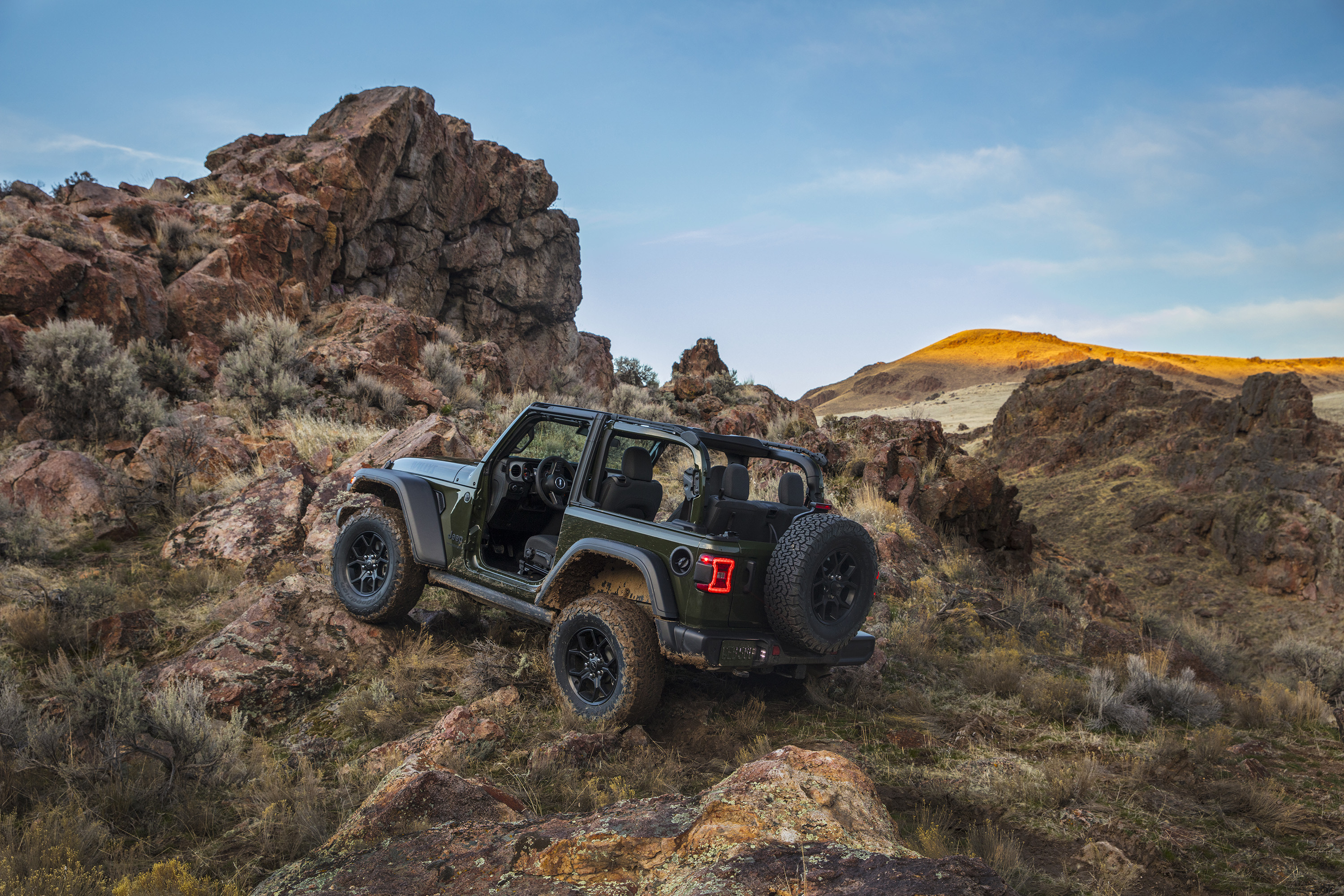
The most critical factor to investigate is the title status. A "salvage" title means the vehicle was declared a total loss. Once repaired and inspected (requirements vary by state), it can be issued a "rebuilt" or "restored" title, allowing it to be registered and insured. A "clean" title is ideal but rare for a truly rebuildable vehicle. Always be wary of vehicles with "junk" or "parts only" titles, as these are typically not intended for road use.
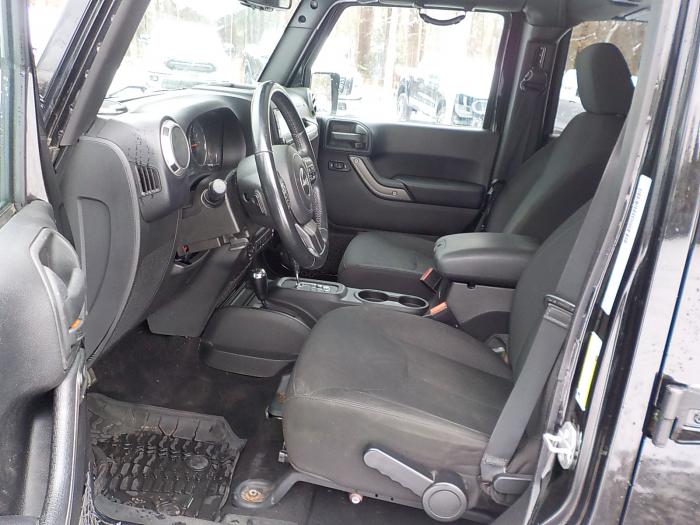
Why Consider a Rebuildable Jeep Wrangler? The Benefits
The decision to embark on a rebuild project isn’t for everyone, but for the right individual, the advantages are compelling:
- Significant Cost Savings: This is often the primary motivator. A rebuildable Wrangler can be purchased for 30-60% less than its clean-title counterpart. Even after factoring in parts and some labor, the total investment can still be substantially lower than buying a fully functional Jeep.
- Unparalleled Customization Freedom: When you rebuild, you’re essentially starting with a blank slate. You’re not just fixing what’s broken; you’re upgrading. Want a lift kit, bigger tires, heavy-duty bumpers, or a specific engine swap? Now’s the time to integrate these modifications seamlessly into your build, creating a truly unique vehicle tailored to your exact specifications.
- Invaluable Learning Experience: For those passionate about mechanics and automotive engineering, a rebuild offers hands-on education like no other. You’ll gain an intimate understanding of every component, troubleshooting skills, and the satisfaction of building something with your own hands.
- Sense of Accomplishment & Pride: There’s immense satisfaction in driving a vehicle you’ve personally resurrected. It’s a testament to your patience, skill, and dedication, and it often fosters a deeper connection with your machine.
- Understanding Your Vehicle’s DNA: Knowing your Jeep inside and out means you’ll be better equipped for future maintenance, repairs, and trailside fixes.
- Potential for Increased Value: While a rebuilt title can sometimes slightly impact resale value compared to a clean title, a well-documented, high-quality rebuild with desirable upgrades can still command a good price and offer a solid return on investment, or at least a highly capable vehicle at a bargain price.

Navigating the Market: Where to Find Rebuildable Wranglers
Finding the right rebuildable Jeep requires a strategic approach. Here are the most common avenues:
- Online Salvage Auctions (e.g., Copart, IAAI): These are prime sources for insurance write-offs. You’ll find a vast selection of damaged vehicles, often with detailed photos and damage reports. Be aware that you’ll typically need a broker or dealer license to bid directly, or you can use a public bidding service.
- Local Auto Auctions: Some local impound lots, police auctions, or general auto auctions may have damaged vehicles.
- Local Mechanics & Body Shops: Establish relationships with shops. They often come across vehicles that customers decide not to repair and might be willing to sell them off.
- Private Sellers (Online Marketplaces): Websites like Craigslist, Facebook Marketplace, and dedicated Jeep forums can list abandoned projects or minor collision vehicles. Exercise extreme caution, insist on in-person inspections, and verify all documentation.
- Specialized Forums & Social Media Groups: Online communities dedicated to Jeep builds and off-roading often have "for sale" sections where members post their projects or damaged vehicles.
- Auto Recyclers/Junkyards: While primarily for parts, some larger yards might sell entire damaged vehicles that are still considered rebuildable.
Crucial Considerations Before Buying: A Pre-Purchase Checklist
Before you commit to a rebuildable Jeep, thorough due diligence is paramount. A hasty decision can lead to a financial nightmare.
- Verify Title Status: This is non-negotiable. Understand if it’s salvage, rebuilt, or if there are any liens. Research your state’s requirements for obtaining a "rebuilt" title and passing inspections.
- Assess the Extent of Damage:
- Frame Damage: The most critical factor. Minor frame tweaks can be repaired, but severe, multi-point frame damage often makes a rebuild cost-prohibitive and unsafe. Look for buckling, creases, or misalignment.
- Rust: Jeeps are prone to rust, especially in the frame, body mounts, and floorboards. Surface rust is manageable; extensive rot is a deal-breaker.
- Water/Flood Damage Indicators: Look for mildew, musty smells, water lines on interior panels, rust in non-exposed areas (under seats, dashboard), mud in crevices, and corroded electrical connectors. Avoid severe flood damage unless you’re an expert in electrical systems.
- Engine & Transmission: Check oil for contamination (water, metal flakes). If possible, try to start it (briefly, if safe) to listen for major knocking or grinding.
- Electrical System: Often the most complex and expensive part of a rebuild. Look for cut wires, burnt insulation, or missing modules.
- Missing Parts: Catalog what’s missing and factor in replacement costs.
- Research Parts Availability & Cost: For common models (TJ, JK, JL), parts are plentiful. For older or less common models, it might be harder. Get estimates for major components you know you’ll need (e.g., fenders, hood, radiator, axle housing).
- Evaluate Your Skill Level & Tools: Be realistic. Do you have the mechanical aptitude, the necessary tools (or access to them), and the time commitment required? Welding, bodywork, and advanced diagnostics might require professional help.
- Calculate Your Total Budget: Don’t just consider the purchase price. Add estimates for:
- Replacement parts (new, used, aftermarket).
- Specialized tools you might need to buy or rent.
- Paint and bodywork.
- Fluid changes and general maintenance items.
- Any outsourced labor (e.g., frame straightening, engine rebuild, paint).
- Unforeseen issues (always add a 20-30% contingency fund).
- Title inspection fees.
- Storage & Workspace: Do you have a garage, carport, or dedicated space where you can safely and legally work on the vehicle for an extended period?
The Rebuild Process: A Step-by-Step Guide (Overview)
While every rebuild is unique, a general roadmap helps manage the project:
- Thorough Assessment & Planning: Once acquired, meticulously inspect every inch. Create a detailed list of required repairs, parts, and a phased action plan. Research repair procedures using service manuals and online resources.
- Documentation & Disassembly: Take hundreds of photos and videos during disassembly. Label every wire, bolt, and component. Bag and tag parts. This will be invaluable during reassembly.
- Frame & Body Repair: Address any structural damage first. This might involve professional frame straightening. Then move to body panel replacement or repair, ensuring proper alignment.
- Mechanical Restoration: Tackle major mechanical components. This could include engine repair/replacement, transmission overhaul, axle rebuilds, suspension replacement, and steering system overhaul.
- Electrical System Diagnosis & Repair: Methodically test circuits, repair damaged wiring harnesses, and replace faulty sensors or modules. This often requires patience and good diagnostic tools.
- Brake System Overhaul: Replace worn brake lines, calipers, pads, and rotors. Ensure the entire system is bled correctly.
- Interior & Exterior Refurbishment: Clean, repair, or replace seats, dashboard components, carpets, and trim. Prepare the exterior for paint (if necessary) or apply protective coatings. Install new lighting.
- Testing & Tuning: Once assembled, perform static tests, fluid checks, and initial startup procedures. Then, progressively move to short drives, listening for unusual noises and checking all systems. Address any issues.
- Salvage Title Inspection (if applicable): Once fully repaired, schedule the required state inspection. Ensure all documentation (receipts for parts, repair photos) is ready.
Common Challenges and How to Overcome Them
- Hidden Damage: The most common pitfall. Solution: Thorough pre-purchase inspection, even hiring a third-party mechanic. Build a contingency fund into your budget.
- Cost Overruns: Parts and unexpected issues add up. Solution: Meticulous budgeting, shop around for parts (new, aftermarket, used), and do as much DIY as possible.
- Time Commitment: Rebuilds are not quick projects. Solution: Be patient. Break down the project into smaller, manageable tasks. Set realistic timelines.
- Specialized Tools/Skills: Some repairs require specific tools or expertise. Solution: Rent specialized tools, borrow from friends, or outsource specific complex jobs (e.g., welding, engine machining).
- Parts Sourcing: Finding the right parts at a good price. Solution: Utilize online marketplaces, junkyards, dedicated Jeep parts suppliers, and forums. Don’t be afraid of used parts for non-critical components.
- Title and Registration Issues: Varies by state. Solution: Research your state’s DMV/BMV requirements before purchase. Gather all receipts and documentation diligently.
Practical Advice and Actionable Insights
- Start Simple: If this is your first rebuild, choose a Jeep with less severe damage, ideally mechanical rather than major structural.
- Join the Community: Immerse yourself in Jeep forums, Facebook groups, and local off-roading clubs. These communities are invaluable for advice, troubleshooting, and even finding parts.
- Invest in a Service Manual: A factory service manual or a reputable aftermarket manual (like Haynes or Chilton) is your bible. It provides wiring diagrams, torque specs, and step-by-step repair procedures.
- Document Everything: Take photos before and during disassembly, keep all receipts for parts, and document all repairs. This is crucial for the rebuilt title inspection and for future reference.
- Safety First: Always use proper jack stands, eye protection, gloves, and follow safety protocols. Never work under a vehicle supported only by a jack.
- Learn to Weld (or Find a Welder): Many Jeep modifications and repairs benefit from welding skills.
- Don’t Be Afraid to Ask for Help: If you’re stuck, reach out to experienced builders or consider hiring a professional for specific tasks you’re uncomfortable with.
Estimated Price Ranges for Rebuildable Jeep Wranglers (Highly Variable)
The price of a rebuildable Jeep Wrangler can fluctuate wildly based on its generation, the extent and type of damage, market demand, and your negotiation skills. The following table provides highly generalized estimates and should be used for illustrative purposes only. Actual costs can be significantly higher or lower.
| Model Generation | Condition/Damage Level | Estimated Purchase Price Range | Estimated Rebuild Cost Range | Total Estimated Investment (Excluding Mods) |
|---|---|---|---|---|
| YJ (1987-1995) | Minor Mechanical/Cosmetic | $1,500 – $3,500 | $1,000 – $3,000 | $2,500 – $6,500 |
| Moderate Collision/Mechanical | $800 – $2,500 | $2,500 – $6,000 | $3,300 – $8,500 | |
| TJ (1997-2006) | Minor Mechanical/Cosmetic | $2,500 – $5,000 | $1,500 – $4,000 | $4,000 – $9,000 |
| Moderate Collision/Mechanical | $1,500 – $3,500 | $3,000 – $7,000 | $4,500 – $10,500 | |
| JK/JKU (2007-2018) | Minor Mechanical/Cosmetic | $4,000 – $8,000 | $2,500 – $6,000 | $6,500 – $14,000 |
| Moderate Collision/Mechanical | $2,500 – $6,000 | $5,000 – $12,000 | $7,500 – $18,000 | |
| JL/JLU (2018-Present) | Light Collision/Mechanical | $8,000 – $15,000+ | $5,000 – $15,000+ | $13,000 – $30,000+ |
| Any Generation | Severe Frame/Water/Fire Damage | $500 – $2,000 (Parts Only) | Often not recommended | Potentially unlimited/not viable |
Disclaimer: These figures are highly speculative. "Rebuild cost" is for getting the vehicle roadworthy and safe, not including desirable aftermarket modifications (lift kits, bumpers, winches, etc.). Parts availability, labor rates in your area, and the specific extent of damage will drastically affect actual costs. Always add a 20-30% contingency fund to your budget.
Frequently Asked Questions (FAQ)
Q: Is it worth buying a rebuildable Jeep Wrangler?
A: It absolutely can be, especially if you have mechanical skills, time, and a clear budget. It offers significant cost savings and the ultimate customization. However, it’s not for everyone and requires patience and dedication.
Q: How much does it cost to rebuild a Jeep Wrangler?
A: As shown in the table above, costs vary wildly. A minor mechanical rebuild on an older TJ might be a few thousand dollars, while a moderately damaged JK could easily cost $10,000-$15,000+ for parts and some outsourced labor. Always budget for more than you initially expect.
Q: Can I register a salvage title Jeep?
A: Yes, in most states, but it requires specific steps. You’ll need to repair the vehicle, gather all receipts for parts, and then have it inspected by the state (often called a "salvage inspection" or "rebuilt title inspection"). Once it passes, a "rebuilt" or "restored" title will be issued, allowing registration and insurance.
Q: What’s the hardest part of rebuilding a Jeep?
A: This depends on the damage. Major frame repair is complex and often requires specialized equipment. Electrical issues can be frustrating and time-consuming due to their intricate nature. Budgeting and managing unforeseen problems are also significant challenges.
Q: Do rebuildable Jeeps hold their value?
A: A rebuilt title can slightly depress resale value compared to a clean title. However, a well-documented, high-quality rebuild with desirable modifications can still be a strong seller and offer excellent value, especially if you built it for significantly less than a clean-title equivalent.
Q: Where can I get parts for my rebuild?
A: You can source parts from new OEM suppliers, aftermarket manufacturers, online retailers (Amazon, Quadratec, ExtremeTerrain), local junkyards/salvage yards, and online forums or social media groups for used parts.
Q: What tools do I need for a rebuild?
A: A comprehensive metric and standard socket/wrench set, screwdrivers, pliers, hammers, a good torque wrench, jack stands, floor jack, basic diagnostic tools (OBD-II scanner), and a service manual are essential. Depending on the damage, you might also need specialized tools for suspension work, electrical testing, or even welding equipment.
Conclusion
The journey of acquiring and rebuilding a Jeep Wrangler is not merely about fixing a vehicle; it’s about forging a deeper connection with a machine, honing your mechanical skills, and bringing a personalized vision to life. While the path to a "rebuilt" title can be challenging, fraught with unexpected turns, and demanding of your time and resources, the rewards are immeasurable.
For the adventurous spirit, the DIY enthusiast, or anyone dreaming of a custom off-road machine without the hefty new car price tag, a rebuildable Jeep Wrangler for sale offers an unparalleled opportunity. It’s a testament to the idea that with passion, perseverance, and a wrench in hand, you can transform a neglected vehicle into a symbol of freedom, ready to conquer any trail you put before it. Choose wisely, plan meticulously, and embrace the adventure – your dream Jeep awaits.

